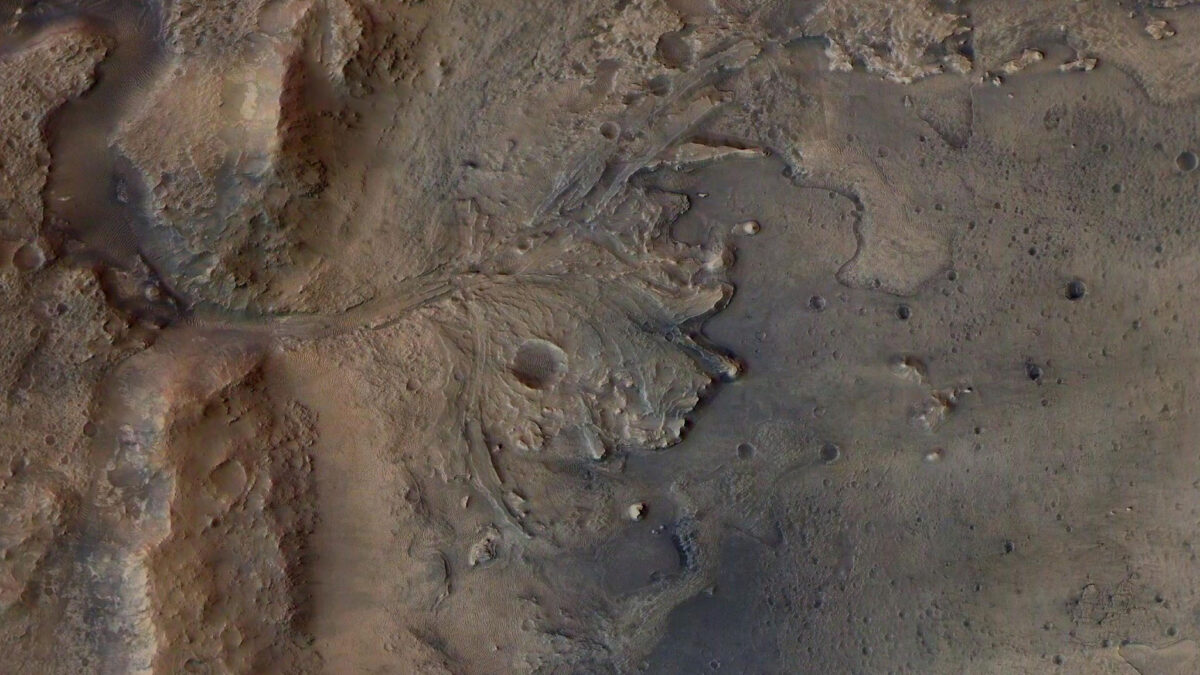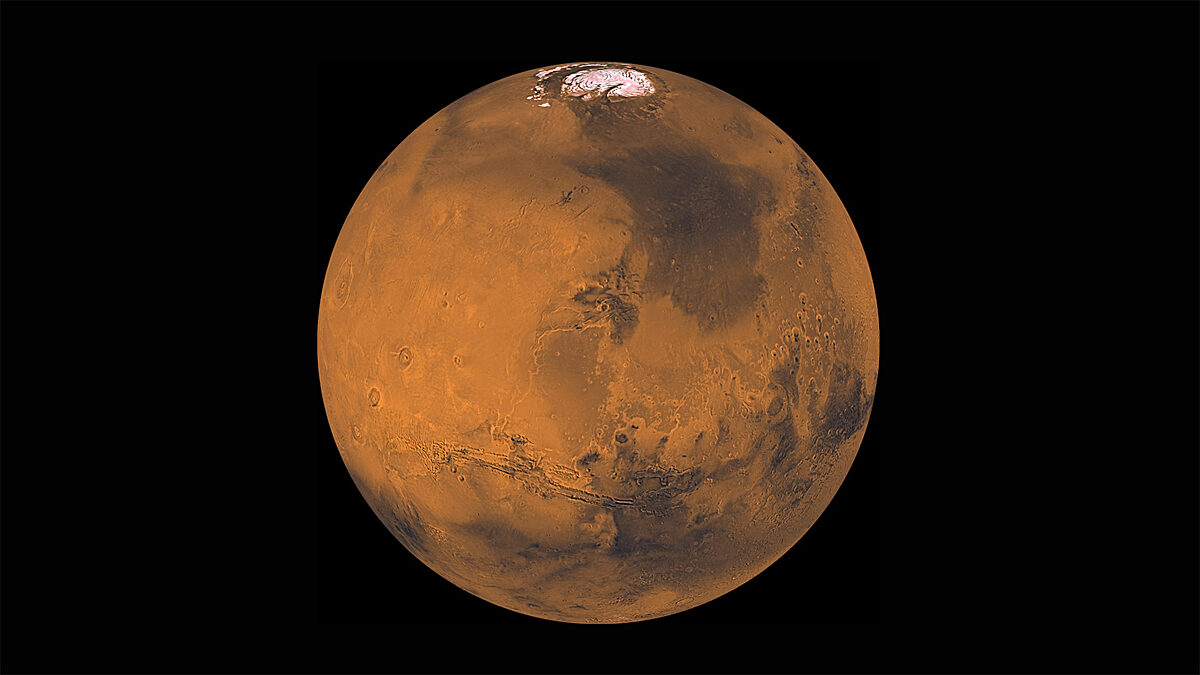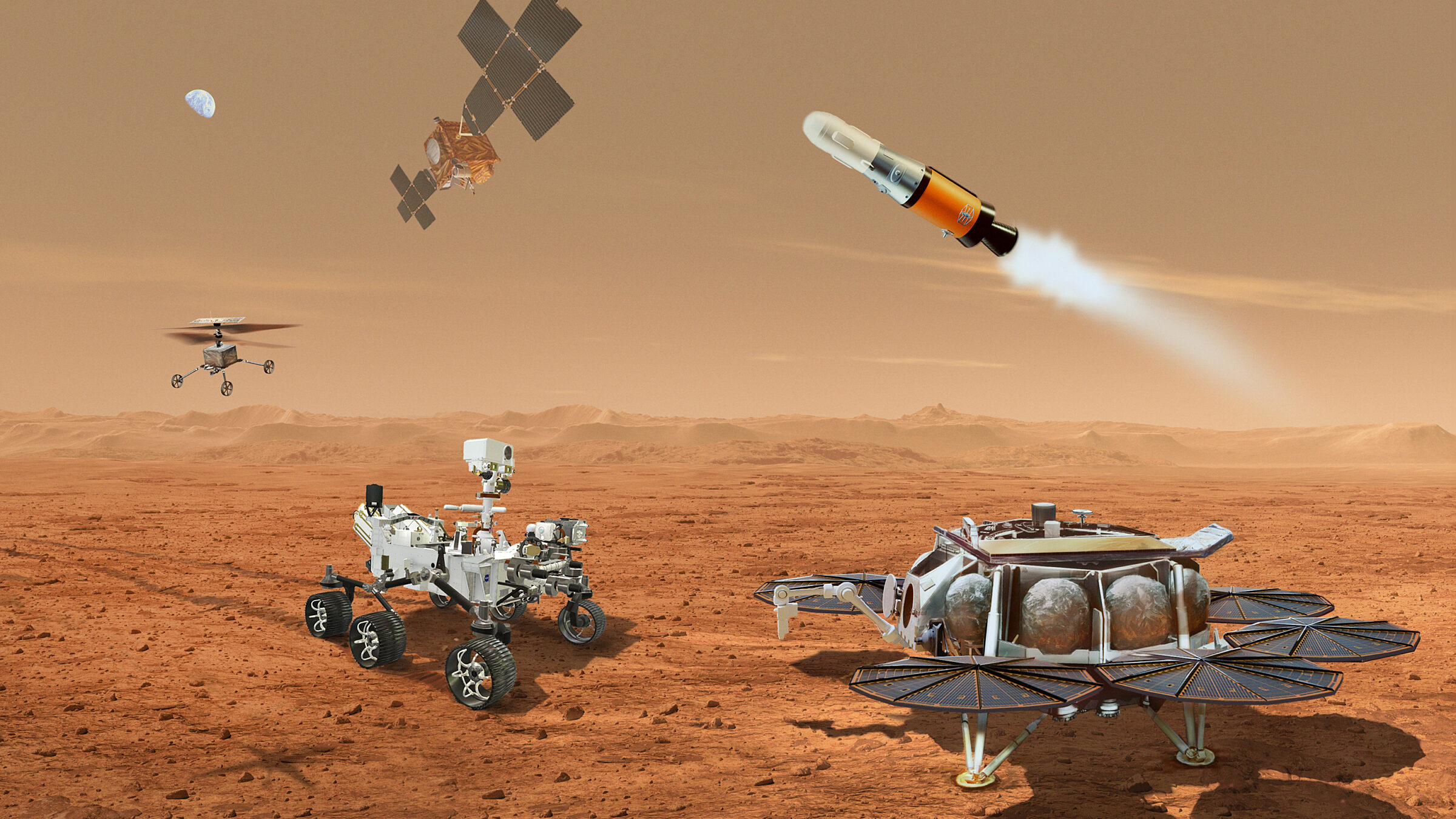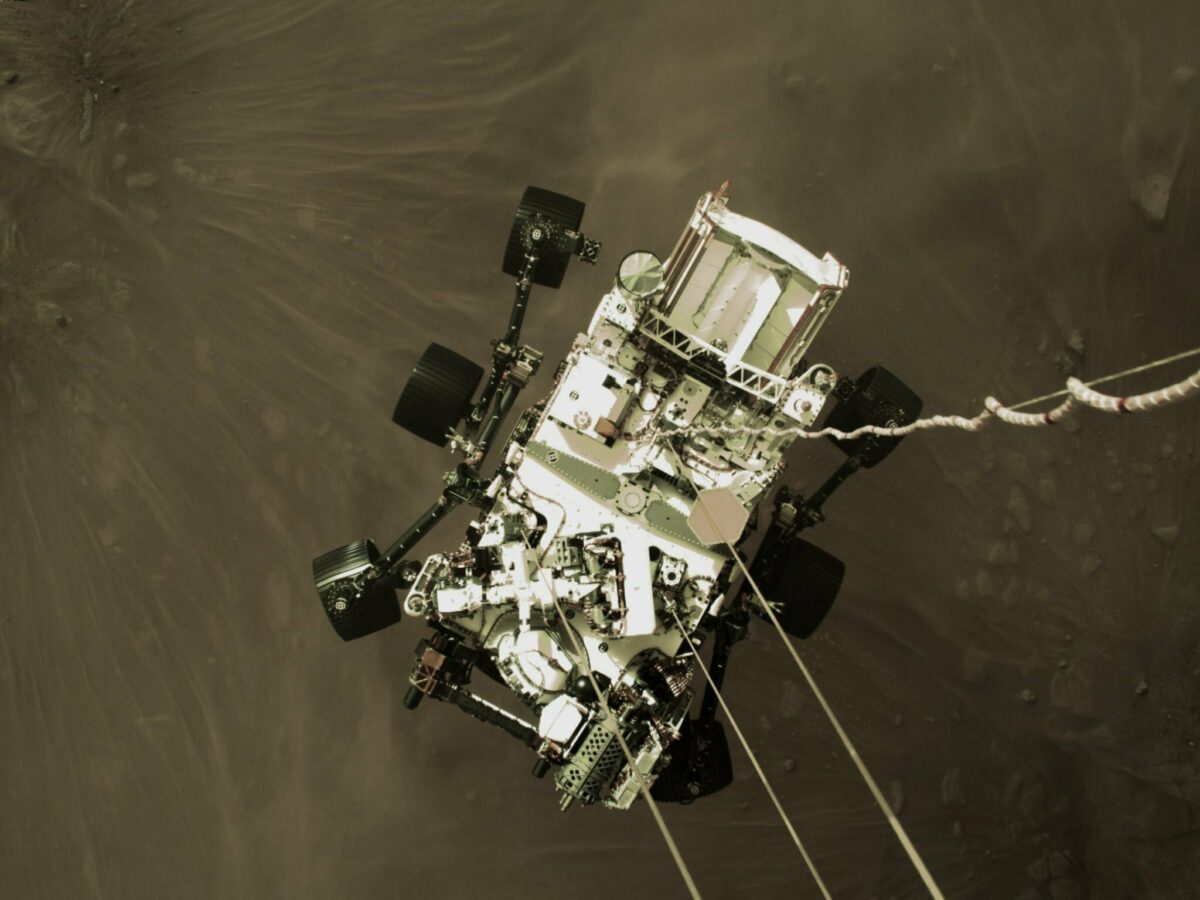Renaissance in red
Mars is becoming a busy place. Over the planet’s past 13 orbits of the Sun (25 Earth years), a veritable fleet of robotic science emissaries has dramatically reshaped our understanding of the geology, meteorology and climate history of Mars. Nine orbiters, three landers, six rovers and even a helicopter have successfully operated on or around Mars since the start of the Mars Pathfinder mission in 1997. That’s more than twice the number of Mars missions that had succeeded previously, dating back to 1960. Thirteen of these spacecraft are still working today.
More important than the sheer number of these missions, however, is how much they have accomplished. Success at Mars has been enabled by NASA and other space agencies, beginning the process of building infrastructure for the red planet.
Orbiters serve as communications relays and are now able to send multiple gigabits of data back to Earth every day. Sensors on landers and rovers have amassed a nearly continuous record of the planet’s weather patterns over more than a Mars decade, enabling detailed forecasting of local dust storms and the comings and goings of the polar caps. Numerous technologies that will be critical for future robotic — and eventually, human — exploration of Mars have been tested and demonstrated.
Many of the missions sent to Mars have been built on scientific discoveries and lessons learned from their immediate predecessors. Maps have been created of the planet’s major geologic and topographic features, mineral deposits and near-surface ground ice. Seismic surveys have been conducted to probe the level of activity of the planet’s interior. The interaction between the Martian atmosphere and the solar wind — the stream of high-energy particles coming from the Sun — is now known to have had a profound impact on the planet’s climate over time.
Through our robotic avatars, we have climbed tall mountains, descended into deep craters, dug trenches in the ruddy sands, zapped rocks with lasers to measure their chemistry, drilled holes in hard volcanic rocks and soft sedimentary layers and even flown across otherwise untraversable dunes.
All of the spacecraft sent to the surface have been designed to survive — and even thrive — in the extremely cold, low- pressure, dusty, three-eighths gravity
environment of Mars. However, none of them have been capable of making the return trip back to Earth. A critical next step for Mars exploration is therefore a series of spacecraft and ultimately, a sample return.

Making it back from Mars
When Mars spacecraft die — for example, bogged down in deep and soft sand, starved of solar power by monster dust storms or unceremoniously crashing on arrival — they become part of the growing collection of historical alien artifacts slowly accumulating on the planet’s surface. I believe that some of the relics and wreckage will become museum exhibits one day, maybe part of a branch of the Smithsonian Institution on Mars where youngsters can learn about the remotely controlled machines and their remote controllers who first began to chart the contours of their home planet.
Back in the summer of 2020, for the first time, a few parts of one of those Martian machines were launched off Earth with every intention of having them come back. Those parts were empty cigar-sized sample tubes carried by NASA’s Perseverance rover and destined for a landing in a crater called Jezero that once hosted a lake in Mars’ early history.
Why is bringing those samples back to Earth such a key part of the future of Mars exploration? Part of the answer comes from the study of Earth’s earliest history, especially the hunt for the earliest evidence of life on our own planet.
The evidence is subtle because terrestrial organisms have only been leaving fossils behind for about 540 million years or so. Before then, in what geologists call the Precambrian geologic period, microscopic and macroscopic organisms were soft-bodied and much more susceptible to complete erosion and decay.
As a result, comparatively little evidence of them has been preserved in the geologic record. Precambrian geologists searching for the earliest examples of life on Earth are thus forced to rely on secondary clues, like chemical or textural signatures left behind by these organisms, rather than fossils. These clues are referred to as potential biosignatures, and there are fierce academic debates about them among geologists trying to pin down the origin of life on Earth.
So, imagine if a potential chemical or textural biosignature was identified on Mars from rover instrument data — not a true fossil, as most space scientists aren’t expecting to find such gob-smacking evidence for life on Mars given the ancient nature of the surface and the experience from terrestrial Precambrian geology. Instead, what if it was some subtle evidence of ancient life from early in the planet’s more Earthlike history?
Even with the most promising discovery, scientists are skeptics by nature and training. It could be an insurmountable hurdle to convince the global scientific community that what had been found is truly evidence of life on Mars.

We actually have experience with just such a situation. In 1996, a group of scientists published a research paper claiming that they’d discovered evidence for ancient life on Mars, preserved in an ancient Martian meteorite that had been found in Antarctica back in 1984. The paper spurred an intense amount of public and scientific excitement and debate and helped to accelerate a new NASA focus on Mars exploration that continues to drive much of the agency’s science agenda to this day.
But most of the relevant scientific community was — and remains — unconvinced by the evidence presented, citing nonbiological explanations as being more likely for each of the chemical, mineral and textural potential biosignatures presented. Despite some continuing support from the original research team and others, the discovery remains unconfirmed. As Carl Sagan, one of The Planetary Society’s founders, used to note, “Extraordinary claims require extraordinary evidence.”
NASA and the planetary science community surmised the best way to show that biosignatures could be indicators of evidence of past (or present) life would be to collect samples on Mars. These samples would be carefully chosen to harbor potential biosignatures and would then be brought back to Earth for more detailed scrutiny.
The precision and capabilities of terrestrial laboratories far outpace those that can be launched into deep space. If multiple labs around the world could agree that the evidence indicates that Mars had or has life as we know it, it would confirm one of the most profound and historic discoveries in the history of science.
Of course, maybe the results would be equivocal, and perhaps the same debates would ensue as those in the terrestrial Precambrian life community. Still, it would be our best shot. And that is exactly why the Mars 2020 mission — and its sample-caching rover that would ultimately be named Perseverance — was created and established as the first step in a multimission campaign called Mars Sample Return.

A quarter-century of discoveries
This July marks the 25th anniversary of the Mars Pathfinder and Sojourner rover landing. In addition to observing that historic moment, we should also acknowledge the many inter- national missions of robotic exploration that have since led us toward a sample retrieval.
For example, teams of scientists and engineers designing, building and flying the Mars Global Surveyor (MGS), Mars Odyssey (ODY), Mars Express (MEx) and Mars Reconnaissance Orbiter (MRO) missions have built their geologic and geochemical science goals and instrument payloads on the results of each prior mission, dating back to the pioneering studies by the first orbital missions, like Mariner 9 and the Viking orbiters. Viking-era geologic maps helped choose the landing site for Pathfinder. In turn, Pathfinder helped to provide some of the “ground truth” that predicted many of the characteristics of future selected landing sites.
The story of how Jezero Crater was chosen as the landing site for Perseverance and the Mars Sample Return campaign is really a story about the ambitious set of robotic missions to Mars over the past 25 years. These missions have enabled us to identify a small number of places to explore in detail in the search for past or present extraterrestrial life.
MGS was the first (1997) to return to Mars orbit in this time period. That team was also the first to exploit the opportunities created by modern digital sensors observing the planet systematically from a 300-kilometer (about 187-mile) circular polar orbit. For more than nine Earth years, MGS mapped the planet’s surface and monitored its weather, improving the resolution by a factor of 10 to 100 times better than Viking. It also added significant data sets that revealed new details about the global topography, mineralogy and magnetic field history of Mars.
Perhaps most intriguingly, MGS images revealed Mars to be a sedimentary planet with multitudes of layers of both volcanic and sedimentary rocks. Layers indicate changing conditions to geologists, and their presence — plus the discovery of river deltas and potentially relatively young gullies — made it clear that the planet had a much more dynamic geologic and climate history than perhaps earlier believed. And some of those dynamic places (like gently deposited sandy, silty and muddy river delta sediments) could be much better than others at preserving potential biosignatures, based on analogs with similar kinds of landforms on Earth.

Building on the results from MGS and earlier missions, the ODY and MEx orbiters helped make the next big leaps in determining the most intriguing, revealing landing sites on Mars. Mineral mapping by these orbiter teams revealed a variety of volcanic rock compositions as well as evidence for clays, sulfates and other minerals formed from the watery alteration of those volcanic rocks. ODY data also revealed evidence for near-surface deposits of hydrogen, interpreted as water ice, at high northern and southern latitudes. The successful 2008 landing of NASA’s Phoenix mission, for example, would provide the ground truth confirmation of that evidence by exposing and digging up ice just below the surface.
The next level of big advances in selecting potential future landing sites has come from MRO. That team has mapped the entire red planet at a scale of around 6 meters (about 20 feet) per pixel — good enough to count individual shipping containers if they were in orbital pictures of boats or trains here at home. They have also taken images of a carefully selected small percentage of the planet at five times better resolution than MGS did, resolving rocks and boulders and other small-scale geologic features as small as only about a meter (3 feet) across on the surface. Add to that new mineral maps of clays, sulfates, carbonates and iron-bearing minerals at a resolution higher than ever before plus radar mapping of the subsurface and the result has been the revelation yet again of a “new Mars” — one that has a more active surface than previously imagined.
This rich and incrementally growing collection of images and data has provided the feedstock for planetary scientists around the world to propose potential sites for many of the next-generation landers and rovers. For example, NASA and ESA have convened multiple community workshops open to all to solicit ideas and justifications for where to land the Spirit, Opportunity, Curiosity, Perseverance and Rosalind Franklin rovers. These exercises have started with dozens of potential sites being pitched, but then over time, the need to satisfy specific mission science goals and engineering constraints has winnowed down the choices to just a few.

In the case of choosing the landing site for Perseverance, additional
pressure came from the fact that NASA wants to bring samples back to
Earth from that site — and not just any samples but a compelling set of
samples that could enable new discoveries about not only the potential
for life on Mars but for all kinds of other fundamental Mars science as
well.
The four finalist sites were all interesting and
scientifically important places to study up close on Mars — we need to
visit them all eventually! Ultimately, however, Jezero was selected
because the extensive orbital imaging of its spectacular river delta’s
sedimentary rocks showed it to be promising for preserving potential
biosignatures. In addition, the presence of other volcanic and altered
minerals could provide additional information on the history of the
region.
The Jezero site would enable the rover team to pose
specific testable hypotheses. For example, Jezero hosted a long-lived
crater lake early in Mars history; volcanic rocks from the crater floor
can help establish the age of the delta and other features.
In my opinion, what set Jezero apart from the other finalist sites is the ability to pose specific hypotheses and to craft a relatively simple story around the exploration and sampling of an ancient river, a delta, lake sediments and nearby volcanic materials.
Looking ahead
Of course, Perseverance landed dramatically and successfully on Feb. 18, 2021. Despite many different rover instrument and systems teams having to work together mostly in isolation from each other during the COVID-19 pandemic, the first year of the mission has been a resounding success, with eight samples of Jezero Crater floor rocks safely stored in sample tubes inside the body of the rover. But how will those samples be returned to Earth?
While it’s an evolving plan involving collaboration between at least NASA and ESA, one possibility is that Perseverance would drop a cache of samples onto the ground in a specific location and then a small “fetch rover” sent to land nearby in Jezero would collect them and bring them back to its lander, where they would be loaded onto a rocket on that lander and blasted into Mars orbit. Once there, a specially designed orbiter would capture the sample container and rocket out of Mars orbit to bring the sample capsule back for a parachute-assisted landing in the Utah desert. What could possibly go wrong?
Actually, many parts of that plan have been demonstrated to various degrees in previous missions, like the small Spirit/Opportunity-class fetch rover, the sample-caching spacecraft (OSIRIS-REx, Genesis and Stardust) and the Earth-return sample canister landing (Genesis, Stardust and Hayabusa).
Some parts are new, though. The Mars Ascent Vehicle (MAV) — the rocket that launches the sample container into Mars orbit — is a completely new and untested concept in Mars exploration. And the capture of that sample container by an orbiter around Mars would be another first-time activity in deep space exploration. Indeed, there are a lot of things to work out, and as the final plan is approved over the coming months to years, there will certainly be changes to the basic outline envisioned today.
In the meantime, the Perseverance team will continue its part of the job in earnest: exploring volcanic and sedimentary materials in Jezero Crater and collecting a set of samples to somehow, someday bring back to Earth.
The Time is Now.
As a Planetary Defender, you’re part of our mission to decrease the risk of Earth being hit by an asteroid or comet.
Donate TodayThe Planetary Report • June Solstice
Help advance space science and exploration! Become a member of The Planetary Society and you'll receive the full PDF and print versions of The Planetary Report.


 Explore Worlds
Explore Worlds Find Life
Find Life Defend Earth
Defend Earth


